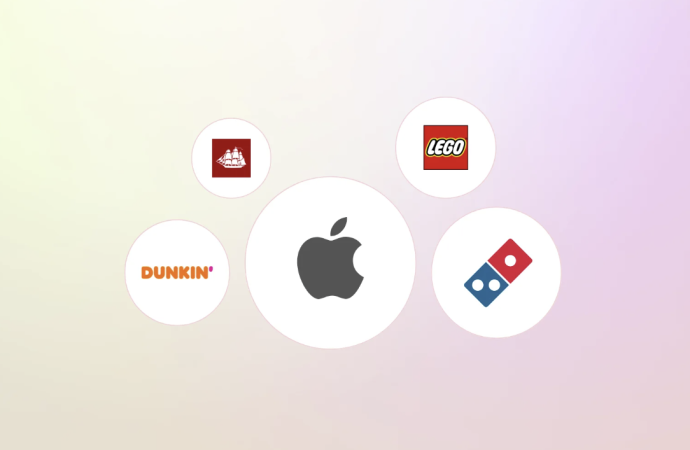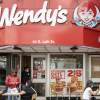Rebranding can be a game-changer for businesses struggling with outdated images or failing to meet the evolving needs of their markets. When done right, a refreshed identity can help a company bounce back from financial troubles, changing customer expectations, or negative perceptions. Here are five companies that successfully turned things around through strategic rebranding, showing

Rebranding can be a game-changer for businesses struggling with outdated images or failing to meet the evolving needs of their markets. When done right, a refreshed identity can help a company bounce back from financial troubles, changing customer expectations, or negative perceptions. Here are five companies that successfully turned things around through strategic rebranding, showing how a focus on identity, messaging, and visual appeal can lead to impressive comebacks.
LEGO: From Financial Struggles to Global Success
Founded in Denmark in 1932, LEGO initially made wooden toys before introducing its famous interlocking plastic bricks in 1949. By the early 2000s, however, the company was losing nearly $300 million annually and was on the verge of bankruptcy. The root of the problem was over-expansion into non-core areas like theme parks and TV programming, which diluted the brand and stretched resources too thin.
To fix this, LEGO refocused on its core product—the bricks. CEO Jørgen Vig Knudstorp sold off unrelated ventures and invested in improving the brand’s iconic sets. The company also embraced digital channels, introducing products like LEGO Mindstorms to appeal to STEM enthusiasts and educators. Licensing popular franchises like Star Wars and Harry Potter added fresh appeal, attracting fans from multiple generations.
This strategic shift paid off. By 2015, LEGO had become one of the most profitable toymakers, thanks in part to the success of The LEGO Movie in 2014. The brand’s modernized visual identity, launched in 2024, reaffirmed its commitment to creativity and innovation. Today, LEGO continues to inspire creativity, partnering with gaming companies like Epic Games and maintaining a passionate global fan base.
Old Spice: A Bold New Identity
Old Spice, founded in 1937, initially catered to older men with its traditional colognes and aftershaves. By the 2000s, its outdated image no longer resonated with younger consumers, causing sales to drop. Old Spice was fading in a market that favored fresher, more youthful brands.
In 2010, Old Spice launched a bold rebranding campaign with the now-famous “The Man Your Man Could Smell Like” commercials, starring actor Isaiah Mustafa. The campaign’s confident, humorous tone quickly went viral, gaining attention across television and social media. The brand further engaged fans by responding to messages with real-time video replies, creating a playful and interactive presence.
Sales skyrocketed by over 100% following the campaign. Old Spice’s shift to a more fun, ironic take on masculinity, along with new packaging and fragrances, appealed to younger men and women alike. This rebrand became a model for how humor and social media can reinvigorate a once-forgotten brand.
Apple: Reinventing Itself to Lead the Way
By the mid-1990s, Apple, founded in 1976, was on the brink of collapse. Internal conflict, outdated products, and tough competition left the company struggling. Its colorful logo and fragmented product line felt outdated compared to the sleek, streamlined offerings of its competitors.
In 1997, Steve Jobs returned as CEO and initiated a major rebranding effort. The “Think Different” campaign positioned Apple alongside great visionaries like Einstein and MLK, and the logo was simplified to a sleek monochrome design. This marked a shift from chaos to a focus on minimalism and design.
The rebrand helped Apple shed its image as just a computer company. With the release of the iMac in 1998, followed by the iPod and iPhone, Apple became a pioneer in consumer technology. By focusing on intuitive user experiences and elegant design, Apple created a loyal customer base and transformed into one of the world’s most influential companies.
Domino’s: A Transparent Transformation
Domino’s Pizza, launched in 1960, became a global leader in fast pizza delivery. But by the early 2000s, the brand was facing stagnant sales and criticism over the quality of its pizza. Customers described the crust as “cardboard” and the sauce as bland, hurting the brand’s reputation.
In 2010, Domino’s took an unusual step: it acknowledged its shortcomings. In a transparent rebranding effort, the company aired ads that admitted its pizza wasn’t up to par and promised to improve. The company revamped its recipes, upgrading the crust, sauce, and cheese to deliver a tastier product. It also embraced technology, launching online ordering, mobile apps, and a real-time pizza tracker to make ordering more convenient.
This honesty, paired with tangible product improvements, resulted in double-digit growth for Domino’s. The brand further capitalized on its rebranding by experimenting with new delivery methods, creating user-friendly store designs, and using humor in its marketing. Domino’s transformation proved that acknowledging weaknesses and making real changes can rejuvenate a brand.
Dunkin’: More Than Just Donuts
Dunkin’, founded in 1950, was long known as Dunkin’ Donuts, dominating the doughnut market. But as coffee culture grew and consumers turned toward healthier options, Dunkin’ found itself at a disadvantage. Competitors like Starbucks had already established themselves as premium coffee brands, and Dunkin’ risked being left behind.
In 2018, Dunkin’ made a bold move by officially shortening its name to just “Dunkin’” to reflect a focus on coffee rather than just doughnuts. Along with the name change, the brand updated its logo and store designs, introducing modern features like mobile ordering, digital kiosks, and dedicated beverage bars.
This rebranding allowed Dunkin’ to compete head-to-head with coffee giants like Starbucks. It expanded its menu to include more coffee varieties, plant-based options, and breakfast items, catering to a broader customer base. By shifting its identity toward coffee, Dunkin’ revitalized its brand, increased sales, and stayed relevant in a changing market.
Why These Rebrands Matter
Each of these rebrands shares key elements of success. Brands like Old Spice and Domino’s embraced honesty and humor to address negative perceptions, while Apple and LEGO stayed true to their roots while embracing innovation. Dunkin’ reinvented its focus, shifting from doughnuts to coffee to meet evolving consumer preferences. In each case, the rebranding went beyond just a new logo or catchy slogan. These companies realigned with their core strengths, listened to customer feedback, and made real changes to products and services.
These success stories show that with thoughtful strategy and the courage to change, businesses can overcome even the toughest challenges. Rebranding is about understanding what made the brand great in the first place, fixing where it went wrong, and adapting to what today’s consumers want. When done right, it’s a powerful way to breathe new life into a brand.

















Leave a Comment
Your email address will not be published. Required fields are marked with *